Choosing the right controller for your vibratory feeder
12th November 2009
Source:
Elscint Automation
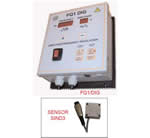
There are various types of controllers for vibratory feeders. Each has its own utility as well as its own advantages and disadvantages. Knowing the features as well as advantages and disadvantages of each of them can help one take the right decision about choosing the correct controller -
1. Varriac / Dimmerstat / variable Transformer – This varies the voltage. It produces flux and therefore, reduces the voltage. It is the most simple controller available for a vibratory feeder. If a diode is used, it can even be used for half wave vibrators. The disadvantage of this is that there is no soft start provision available and hence it starts with a jerk, which can damage the vibrator coils. Another problem is that any change in the input voltage supply results in a corresponding change in the output supply. Even a change in the frequency or load on the vibrator has an effect on the working of the vibratory feeder. This is a very low cost option.
2. Electronic Voltage Controllers – These work on the principle of chopping of the sine wave to ensure control over the voltage. This is superior to the varriac / dimmerstat as soft start and soft stop can be provided in the circuit and some amount of voltage fluctuation too can be taken care of. However, the disadvantage is that any change in frequency has an effect on the working of the vibratory feeder. Another disadvantage is that any change in the load on the vibrator has an effect of the working of the vibratory feeder. Additionally, overload cut-off provision can be provided. This is quite important as in case the current drawn exceeds set limit, the power supply to the vibrator is switched off automatically, thus saving the vibrator coils from getting burnt. The cost is quite reasonable and hence this type of controller is usually provided with majority of vibratory feeders.
3. Analog Frequency Controllers – These can vary the voltage and to some extent the frequency. Therefore, one can get constant voltage and constant frequency, thereby improving the functioning of the vibratory feeder. However, the problem of load remains whereby any change in the load on the vibratory feeder has an effect on its performance. The cost is more than that of a electronic controller.
4. Digital Frequency Controller – In addition to the above i.e. providing constant voltage and constant frequency, it can vary the frequency in order to find out the optimum frequency at which the vibratory feeder works best. Thus the time spent in manual tuning of the vibratory feeder can be eliminated as this can be done with the help of the Digital Frequency Controller. The cost of this type of controller is quite high.
5. Auto-Tuning with Digital Frequency Controller – This helps in finding the optimum frequency at which the vibratory feeder works best automatically, further reducing the manual error and time. However, this further increases the cost.
6. Feedback Control – In case of a Digital Frequency Controller, feedback control can be added whereby an accelerometer is provided. This not only improves the speed of the vibrator but acts as a load cell wherein it provides feedback to the controller about the load on the vibrator and the controller can adjust itself automatically. This can further improve the performance of the vibratory feeder. The price of an accelerometer is added to that of the digital frequency controller, making it more costly.
7. Double Speedy - In all the above Models, double speedy can be incorporated i.e. two potentiometers are given whereby one is used for course adjustment and one for fine adjustment. These are of tremendous use in case of weighing and batching systems.
Looking at the above, Mr. Monish Shete, director of Elscint Automation recommends that one should base his decision of selection of a controller on the following criteria –
1. Whether high speed feeding is required (use a frequency controller with accelerometer)
2. Whether there is a continuous changeover from gen set to state load (use a frequency controller giving constant voltage and constant frequency)
3. Whether heavy components are used, leading to change in the load on the vibratory feeder continuously (use a frequency controller with feedback provision)
4. Regular working, not falling in either of the above three categories (use a normal voltage controller)
2. Electronic Voltage Controllers – These work on the principle of chopping of the sine wave to ensure control over the voltage. This is superior to the varriac / dimmerstat as soft start and soft stop can be provided in the circuit and some amount of voltage fluctuation too can be taken care of. However, the disadvantage is that any change in frequency has an effect on the working of the vibratory feeder. Another disadvantage is that any change in the load on the vibrator has an effect of the working of the vibratory feeder. Additionally, overload cut-off provision can be provided. This is quite important as in case the current drawn exceeds set limit, the power supply to the vibrator is switched off automatically, thus saving the vibrator coils from getting burnt. The cost is quite reasonable and hence this type of controller is usually provided with majority of vibratory feeders.
3. Analog Frequency Controllers – These can vary the voltage and to some extent the frequency. Therefore, one can get constant voltage and constant frequency, thereby improving the functioning of the vibratory feeder. However, the problem of load remains whereby any change in the load on the vibratory feeder has an effect on its performance. The cost is more than that of a electronic controller.
4. Digital Frequency Controller – In addition to the above i.e. providing constant voltage and constant frequency, it can vary the frequency in order to find out the optimum frequency at which the vibratory feeder works best. Thus the time spent in manual tuning of the vibratory feeder can be eliminated as this can be done with the help of the Digital Frequency Controller. The cost of this type of controller is quite high.
5. Auto-Tuning with Digital Frequency Controller – This helps in finding the optimum frequency at which the vibratory feeder works best automatically, further reducing the manual error and time. However, this further increases the cost.
6. Feedback Control – In case of a Digital Frequency Controller, feedback control can be added whereby an accelerometer is provided. This not only improves the speed of the vibrator but acts as a load cell wherein it provides feedback to the controller about the load on the vibrator and the controller can adjust itself automatically. This can further improve the performance of the vibratory feeder. The price of an accelerometer is added to that of the digital frequency controller, making it more costly.
7. Double Speedy - In all the above Models, double speedy can be incorporated i.e. two potentiometers are given whereby one is used for course adjustment and one for fine adjustment. These are of tremendous use in case of weighing and batching systems.
Looking at the above, Mr. Monish Shete, director of Elscint Automation recommends that one should base his decision of selection of a controller on the following criteria –
1. Whether high speed feeding is required (use a frequency controller with accelerometer)
2. Whether there is a continuous changeover from gen set to state load (use a frequency controller giving constant voltage and constant frequency)
3. Whether heavy components are used, leading to change in the load on the vibratory feeder continuously (use a frequency controller with feedback provision)
4. Regular working, not falling in either of the above three categories (use a normal voltage controller)
Similar articles
More from Elscint Automation
- Elscint Vibratory Bowl Feeder for feeding Camphor Tablets 22nd April 2013
- Elscint Vibratory Bowl Feeder for feeding small Pins 19th February 2013
- Elscint Rotary / Centrifugal Feeder 11th February 2013
- Vibratory Drive for Bausch + Stroebel bowl 30th October 2012

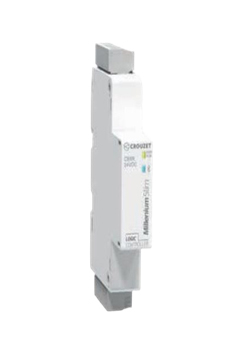
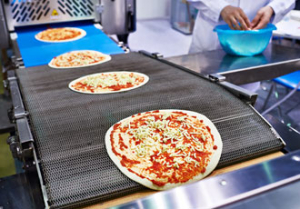
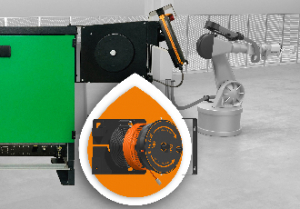
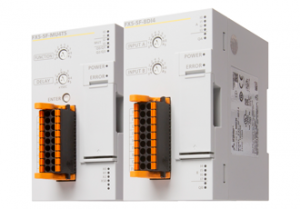







Write a comment
No comments